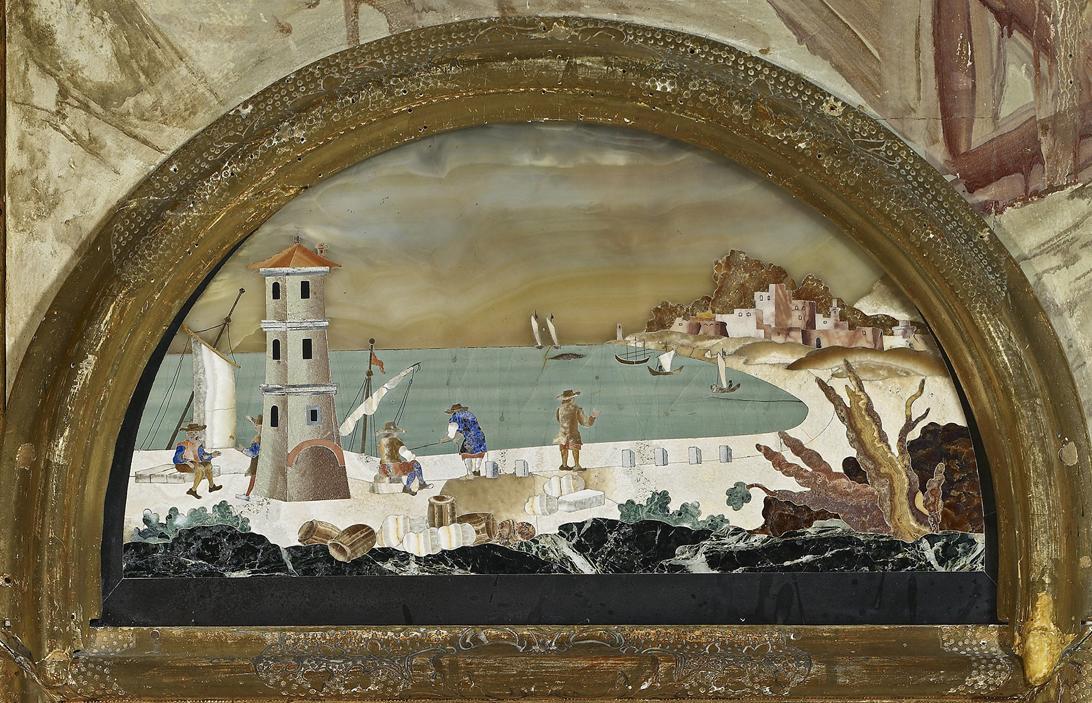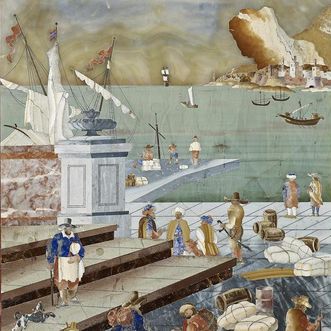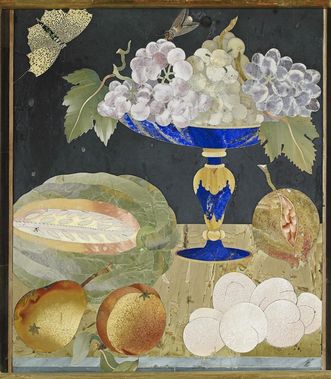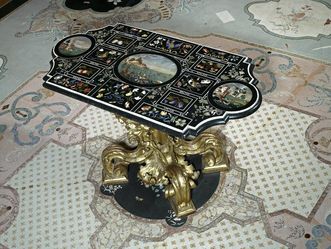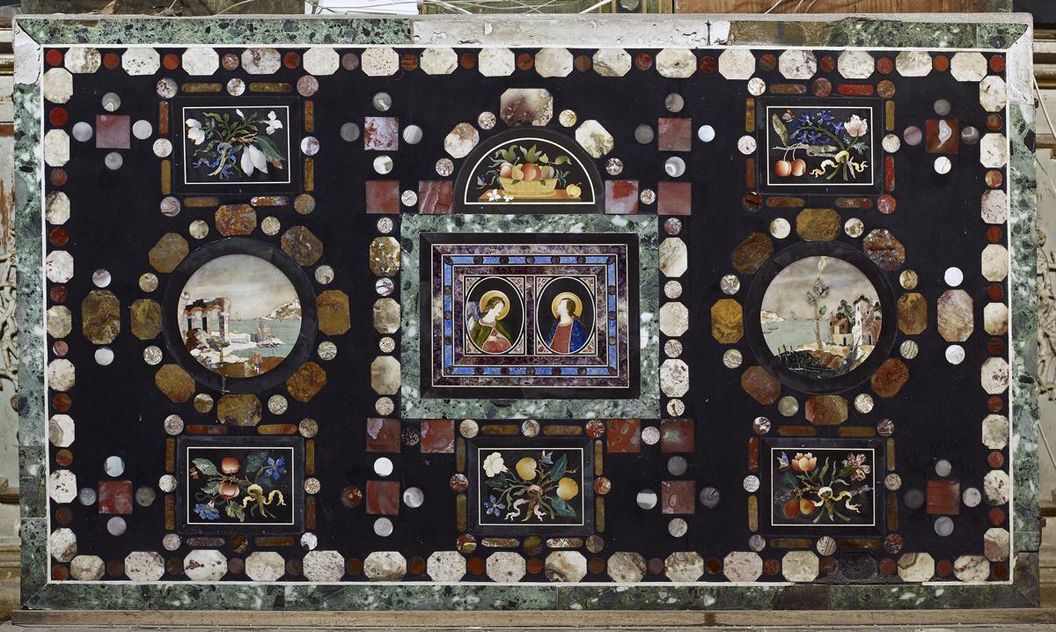Valuable decorative panels
Precious stones and stone vessels are some of the most valuable collector's items at any given royal court, and Rastatt was no different. The highlight of Margravine Sibylla Augusta's collection, however, were the pietra dura panels from the royal studios of the Medici family in Florence. Medici artists decorated furniture, small boxes and the walls of the family's mausoleum with these illustrative panels. Royal houses that became friendly with the family sometimes received such panels as gifts, as was the case with Sibylla Augusta, who received a large panel illustrating the annunciation.



